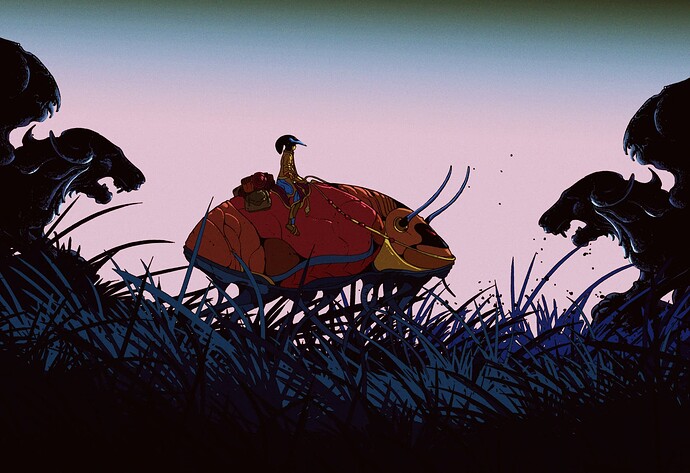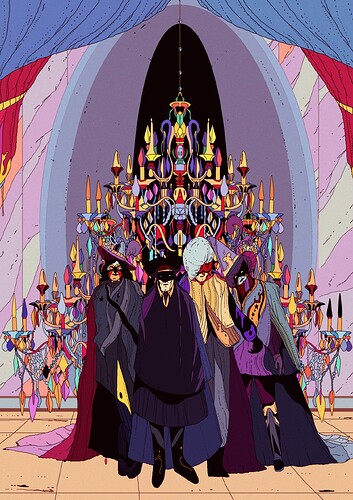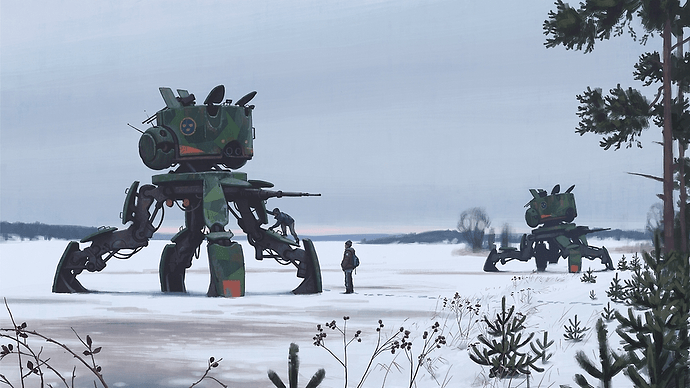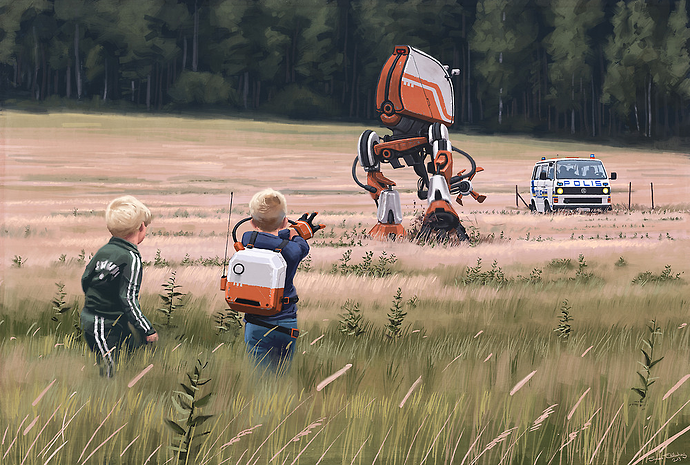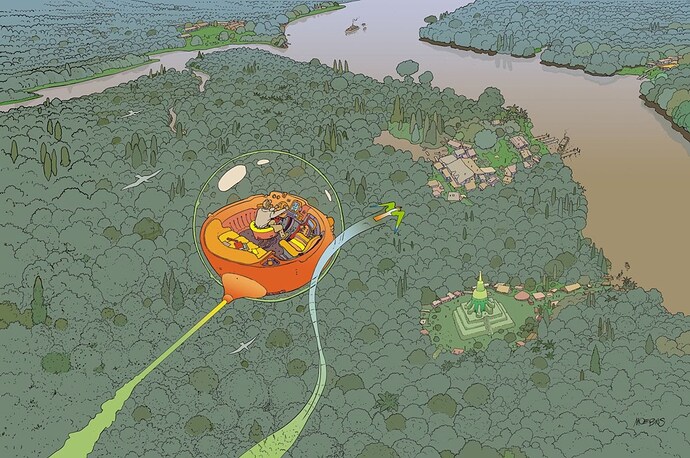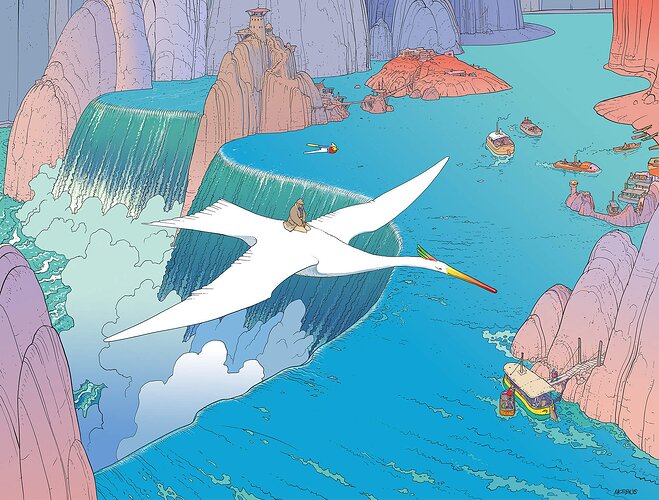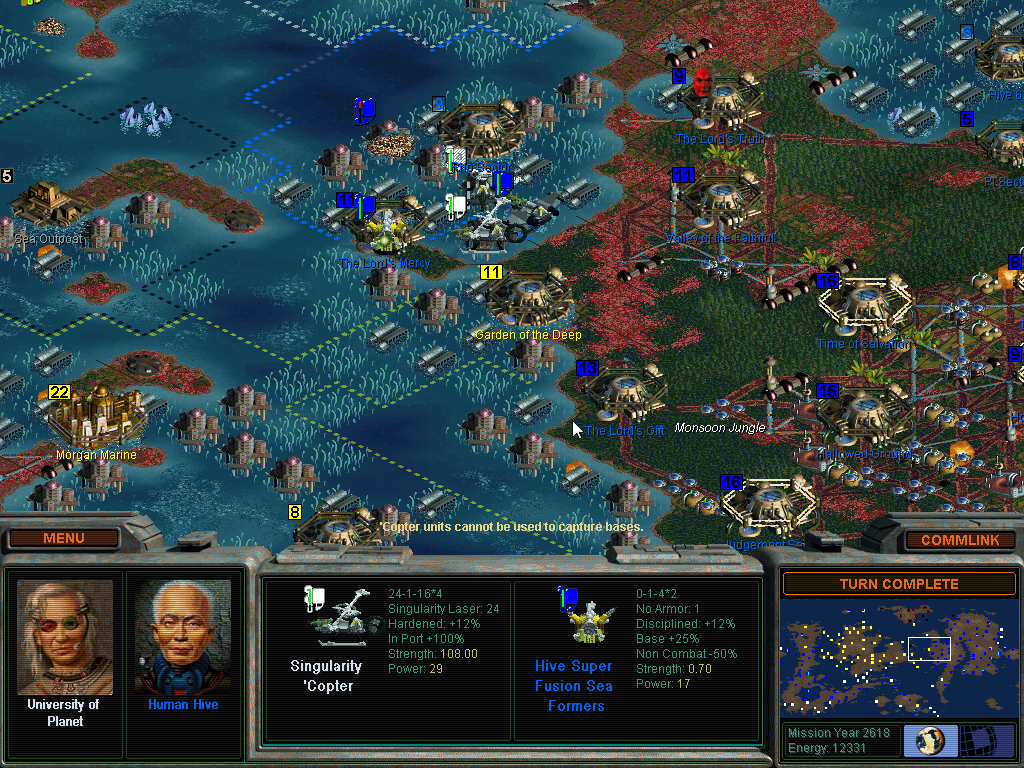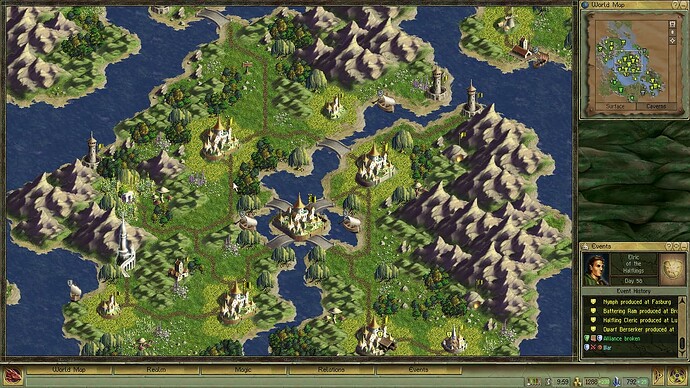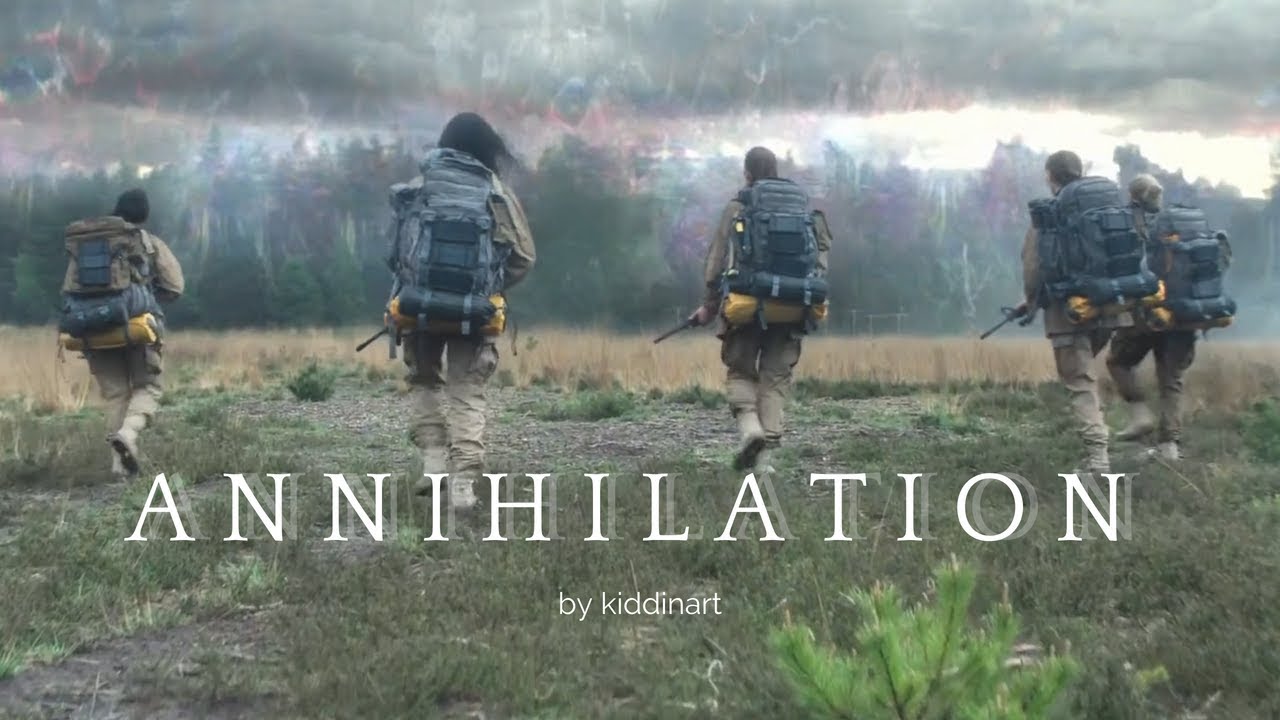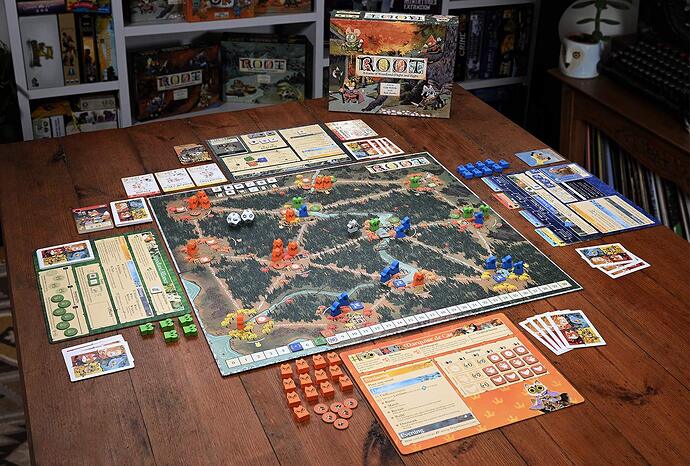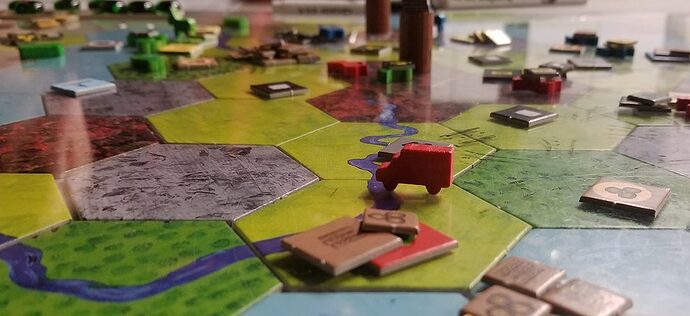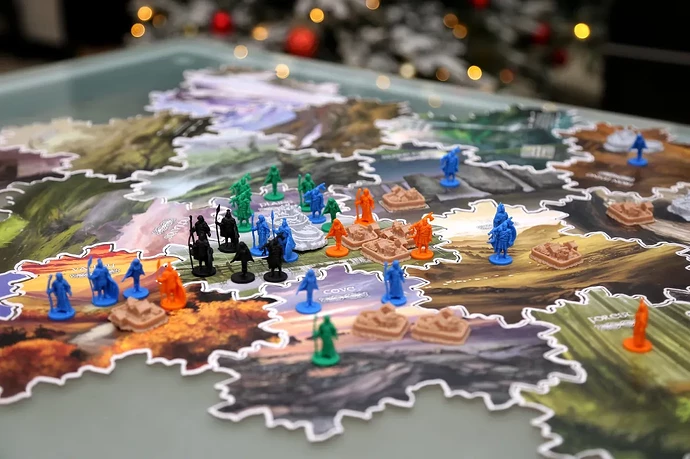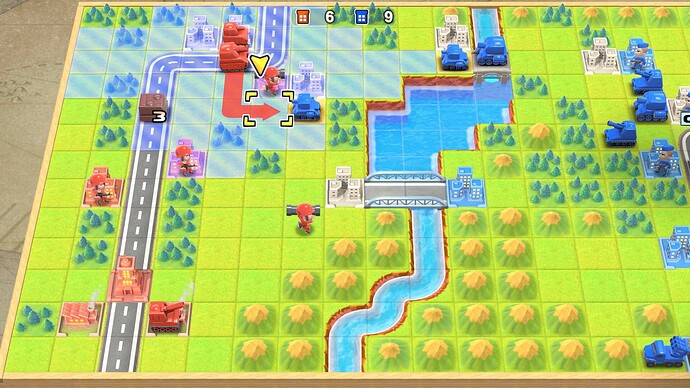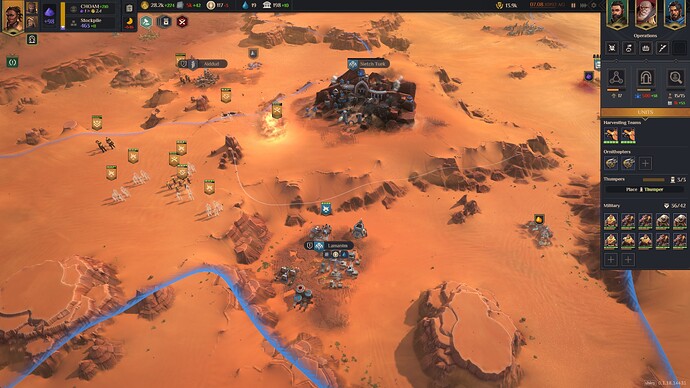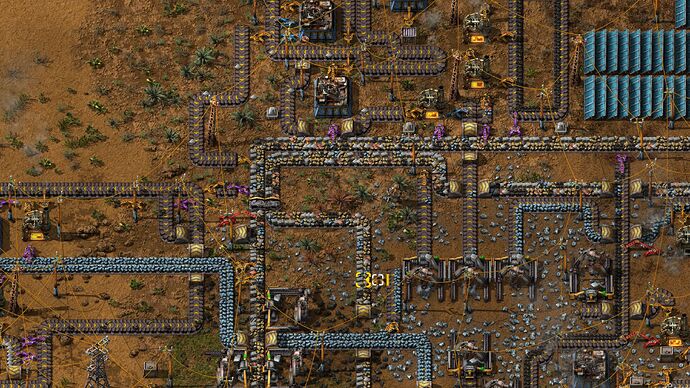We get a fair amount of questions about what inspired Cantata or “where it comes from”. I think this is due in part to how wild it looks compared to even more traditionally visually arresting strategy games. Top that off with a weird sci-fi narrative, and we’ve got something that is, definitively, different.
But of course it’s not like we made up Cantata from complete scratch. Everyone on the team brought their own influences, ideas, and originality to the project to craft it into what it is today, and so as part of that effort I wanted to list out here the things that really helped set a course for what Cantata is today.
Art
Cantata really starts here. I had a super rough idea of “Advanced Advance Wars” and knew I liked isometric pixel art, but didn’t really know what direction to go in from there. Once I connected with Cobralad on the TIGSource forums and set a bit of a direction for the game, I ravenously started saving a ton of images that I thought could point to the general “vibe” of the game.
Killian Eng
I think discovering Killian right around when I started Cantata is what really drove a lot of the aesthetic vibe of the game. I loved the feeling of the mysterious worlds that seemed to have an emotional depth to them. I still find so much to love about every new image he creates as well.
Simon Stallenhag
As I tell it, Cantata really started off in a visual style inspiration that was much more akin to neu-Dune movies (albeit nearly a decade before their release). I was looking at blogs like Sink00 and OtakuGangsta and thinking about how cool it would be to have a strategy game that looked like those. But then I saw Cobralad’s pixel art and the game’s now very-recognizable aesthetic emerged and I saw a way forward to make something that looked truly unique.
Around the same time, Simon Stallenhag was starting to pick up steam on the internet (again, very pre his show + Scythe), and the robot designs were especially interesting for Cantata. I liked the idea of these repurposed utility vehicles, and I think you can really see the influences in the Machine faction.
Moebius
Although maybe an obvious reference, I have to say I wasn’t really looking at Moebius (or Mike Mignola) art when I was first developing the look for Cantata, even as it’s clear that the references I was looking at were looking at those. Since being into production I have started looking to Moebius more, but instead of a direct reference he’s more of just a patron saint of any colorful weird retro-y sci-fi art project. All roads lead back to Moebius.
Alpha Centauri / Civilization 3 / Age of Wonders 1
Isometric Pixel Art is sort of rare as a modern art style for videogames, so when looking for visual references from actual games we had to reach back a bit to find stuff to look at. The thing about these games though is that the art style really stands the test of time. Each game still looks unique and readable, which is a major boon for pixel art (and pixel art-ish) generally. It doesn’t age as much as you might think.
Books
Our writer Roy Graham, brought a lot of his sci-fi influences to Cantata when he started writing the story of the game. Specifically, he was really interested in books and writing that focused on the idea of “other minds”. Some key literature here:
Ancillary Justice
Ancillary Justice feels like it could be a side story for The 111th Reign of Harmony and Prosper. Its full of a (mostly) human galaxy, but with AI minds that puppet machines, ships, and individual soldiers.
Annhilation
Annihilation gets at some of the ideas we were thinking of when shaping The People of Sun and Shadow and Shoal, with the idea of the planet itself being a non-trivial “entity” in the scope of the story. I’m also personally a fan of the movie as well!
Too Like the Lightning
This one is a bit of a late addition, and is maybe more “local” than the concept of galaxy-spanning empires, but it feels “Cantata-adjacent” enough to be included.
Dune
Similar to Moebius, all roads lead back to Dune. I suppose this is the time to reveal that I hadn’t actually read (or watched) literally anything Dune related until the new movie came out. Crazy, I know. I didn’t know my Atreides from Harkonen. But via word of mouth and other people I got the sense of what Dune was (and did read the actual book in late 2022), and so it somewhat inspired me in making Cantata, but was honestly not top of mind. I think it was likely more of an influence for my other collaborators and references than me!
Games
We had a really rough idea of the “shape” of Cantata when we set out (see this talk here for more about its evolution) , but it was really over time that we learned what we wanted the game to be. We started along the path of making the game, and then as things started to shift and move we would pull references closer to us and look at how they did things in order to better help us understand what we were trying to do.
Notably, we also were looking at boardgames just as much (if not more!) than videogames. If you’ve played modern hobby boardgames then you’ll likely see a few similarities in Cantata, but for those who don’t know or are interested in “boardgames like Cantata” we’ve got you covered as well!
Boardgames
Root
Ah Root. This is an asymmetric area control game where multiple factions fight over control of different territories that contain different resources. Sound familiar? Cantata is definitely not directly pulling from Root so don’t pick it up expecting Cantata: The Board Game, but there are enough similarities here in how the game plays on the board that it’s worth experiencing.
Roads and Boats
This is a funny one because only after Cantata’s design was really done did I learn about this Splotter classic. This one is very similar to how Cantata’s old supply line system worked, but lacks any real notion of combat or territory.
Inis
Probably my favorite area control game. It’s hard to think of what Cantata specifically borrows from here, but I was playing a lot of Inis when really in the weeds of Cantata design so I’m sure it manifests in the game somewhere. I think specifically the idea of tradeoffs in terms of AP can stem from the action selection here, even though it’s definitely not a one-to-one match.
Twilight Imperium
And then of course the granddaddy of giant 4X boardgames — Twilight Imperium is a big reference for Cantata. What I love and really took from TI was that the game is comprised of generally very simple actions that, in aggregate, provide a distinctive texture to each turn and game. Granted Cantata doesn’t have research or diplomancy, but the core of idea of just have pieces to work with in a sandbox is very much Cantata.
Videogames
BUT Cantata is a videogame, so naturally we were looking at videogames as well.
Advance Wars
Though it maybe isn’t obvious now, Advance Wars was the key game I was looking at when I started Cantata all those years ago. We’ve come a long way since then, but consistent throughout was approaching every design decision in the game with the same design heuristic - “what does the Advance Wars version of this mechanic look/feel like?”. Meaning more — lets take a really streamlined look at “big” mechanics like Regions, Supply, Unit Progression, etc., and understand how we can boil them down to their essential components to keep the game moving while still providing depth.
One major thing we really took from AW was the structure of narrative in the Campaign. Cantata’s story really revolves around each of its COs, and you play a map in charge of each of them that both lets you play with the CO while also progressing the story.
Civilization
It may go without saying that any 4X game is playing in an arena where the tune is set by Civ, and Cantata is no different. Civilization for us though was less of a direct reference point and more a design idea to pivot around (very similar to Old World). In practice there is very little directly similar about Cantata and Civ, but if you play them both the ideas are clearly related.
Total War
Total War was a major inspiration for Cantata, but really only in the strategic view. The way the map is broken down into territories and regions is an obvious inspiration to Cantata, along with how regions are managed somewhat individually. We really wanted to add in Region Improvements to Cantata, but ran out of time to really do them justice. I think there’s still more to take from TW for ongoing work around Cantata, so I’m sure we’ll be returning here in the future.
Northgard / Dune: Spice Wars
Northgard is very much Inis meets Total War, and as such is a big inspiration for Cantata. The regions specifically again are a big reference, with each only being able to support a limited number of buildings, and those buildings then dictating what can be built in that region (sound familiar?).
Similarily, Dune: Spice Wars then is another reference, though we came out into Early Access at the same time so I couldn’t really use it as a reference point for development. More that if you want an RTS version of Cantata, Dune: Spice Wars is that game.
Factorio
The joy of connecting things. The Factorio reference came into view early on, and by accident. We were thinking supply lines for Cantata and then when Factorio came out we really saw what was possible. Back when Cantata had explicit supply lines we were much closer in spirit to Factorio, but as we gradually moved away from that model Factorio became more like a cousin instead of direct sibling. I still do really like the idea of explicit supply lines in a strategy game, but try as we might for Cantata we couldn’t find a way where they really meshed with the rest of the game. However, I’m glad to see in some reviews that people still feel the influence, and are excited by the resource/logistics component that stems from there.
Final Fantasy Tactics (Advance)
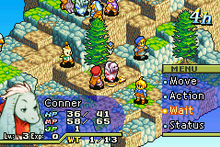
It’s hard to say what directly Cantata takes from here, but FFT was definitely on my mind a lot as we made Cantata. I think just its general feeling was really inspiring, along with providing tactical complexity with relatively simple actions.
Cantata did, early on, have Unit headings which took direct inspiration from FFT, but it was one of those things that we took away eventually because we realized it didn’t really make sense for the scale of Cantata.
Okay! I think we’ve hit the high notes here on where Cantata really “comes from”. There’s a fair number of other things we were looking at as we moved along making the game, especially as other people began working on the game besides me and brought their own references. But as far as the starting point, I think it’s well sketched out here!
Hope you all enjoy and hope some people find some new things they like from this list!
